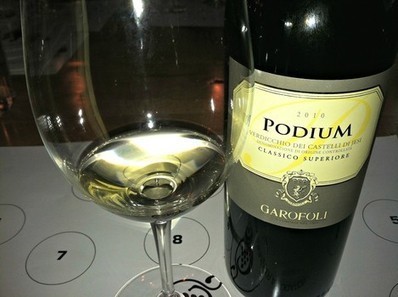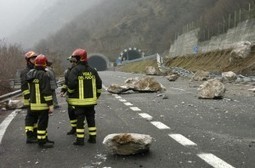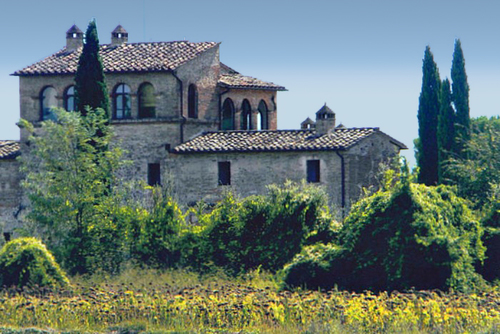See on
Scoop.it -
Good Things From Italy - Le Cose Buone d’Italia
With the first stirrings of summer heat, the crisp, citrusy allure of white wine beckons. Italian whites differ from California whites in that they are often a blend of citrus, almond, herbal, and mineral, less big fruit than a bewitching melange, mostly fermented in stainless steel instead of a toasted oak barrel, an interesting yet easy-drinking wine to ponder the questions of the ages.
Verdicchio is a characterful white wine that comes from the Le Marche region of Central Italy, just east of Tuscany on the coast. It’s a rugged region, sparsely populated, with a history of two wine grape varietals, Verdicchio for white and Montepulciano for red. Verdicchio comes in two distinct incarnations, the Verdicchio dei Castelli di Jesi (the biggest production, softer, rounder, and most easily found in this country) and the Verdicchio di Matelica (which is a sharper, more floral version). The Verdicchio del Castelli di Jesi springs from limestone soils, channeling its minerality into the body of the wine. Verdicchio means “little green one” in Italian, and its straw color with green tinges reflect that. A flavor profile of fresh apples, lemon (fruit, peel, and flowers), herbaceous notes, wet stone, and a slightly bitter toasted almond finish form the base for the wine. Crisp acidity, with medium alcohol, it is food-friendly (especially to fish) and an excellent aperitif. Once disparaged as a simple quaffing wine, Verdicchio’s quality has been improved in recent years by local producers, especially Garofali, who has mastered the incarnation of this grape.
At a recent Le Marche educational dinner seminar, conducted by the North American Sommelier Association, four Verdicchios were explored. The 2010 Bucci Verdicchio dei Castelli di Jesi Classico was a pleasant aperitif, more golden delicious apple and almonds, with the vanilla touch of a brief time aged in oak. The 2011 Garofoli “Macrina” Verdicchio Classico Superiore was aromatic, elegant, yet crisp in its expression. Grapefruit, lemon, and lime notes frame the yellow plum, ripe apples, peaches, and mango flavors, with a long finish of slightly bitter hazelnut skin. The 2007 Villa Bucci Verdicchio dei Castelli di Jesi Classico Riserva was rounder, more elegant, full bodied and well balanced, with aromas and flavors of apricot compote, spice, hazelnut, honey, and flint. The oak and bottle aging contributed to the more savory character of the wine, with more spice, nuts, herbs, and mineral notes present over the fruit and floral of a younger wine. Finally, the 2010 Garofali Podium Verdicchio Classico Superiore offered up intense ripe apricot fruit, citrus, almond, a touch of honey, mineral notes, a hint of green hazelnut, no oak, and an intriguing salinity. This is not a simple wine, dry and crisp when young, but worthy of aging (it develops a deep golden hue and a ripe apricot flavor tinged with a burnt sugar note reminiscent of creme brulée), it has earned lots of notice from wine critics. and the influential Italian wine guide Gambero Rosso has bestowed the Tres Bicchieri (three glass) award to this wine.
Try Verdicchio for a change of pace, a savory, crisp white wine that complements seafood and fish, but stands on its own as a zesty, citrusy, almond-tinged aperitif, constantly refreshing the palate, and begging you to empty the glass.
See on examiner.comvia Tumblr http://italianentertainment.tumblr.com/post/45666083169










